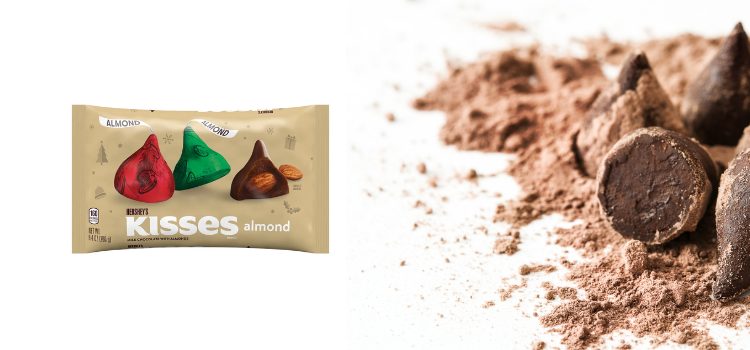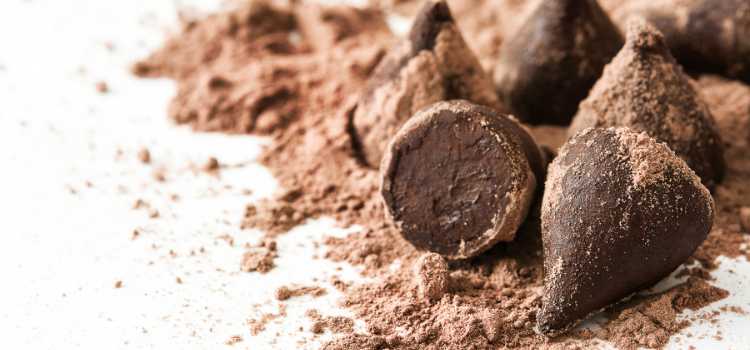As an Amazon Associate, I earn from qualifying purchases

Hershey Kisses have been a beloved chocolate treat for generations, their iconic shape and foil wrapping instantly recognizable. Whether you’re enjoying them straight from the bag or using them as a topping for your favorite dessert, Hershey Kisses add a touch of sweetness to any occasion. But have you ever wondered how these little chocolate morsels behave when exposed to the heat of an oven?
For baking enthusiasts, understanding the melting behavior of Hershey Kisses is crucial, especially when they are used as key ingredients in various recipes. This article explores the science behind melting chocolate, shares experiments conducted in kitchen ovens, and provides practical tips and recipes for using Hershey Kisses in baking.
Composition and Melting Point of Hershey Kisses
To understand how Hershey Kisses melt, we must first delve into their composition. These chocolates are primarily made from cocoa solids, sugar, milk, and cocoa butter, the latter of which plays a significant role in how the chocolate melts. Cocoa butter is a fat derived from cocoa beans, and its presence in chocolate determines the temperature at which it will begin to melt.
Chocolate melting points vary depending on their formulation. For instance, dark chocolate, which has a higher cocoa content and less milk, tends to have a higher melting point than milk chocolate because it contains more cocoa butter and less milk fat. White chocolate, which lacks cocoa solids, melts at a lower temperature due to its high sugar and milk content.
Hershey Kisses, being a type of milk chocolate, have a melting point somewhere in the middle. They are crafted to be stable at room temperature but will begin to soften and eventually melt when exposed to heat. This characteristic is what makes them interesting to study in the context of oven baking.
Experiments and Observations
To determine how Hershey Kisses behave in the oven, several experiments have been conducted. These tests generally involve placing Hershey Kisses in an oven set at different temperatures and observing the changes over time.
In a typical experiment, a batch of Hershey Kisses is placed on a baking sheet and put into a preheated oven, with temperatures ranging from 200°F to 350°F. The chocolate is monitored at intervals to note any changes in texture and form. At lower temperatures, Hershey Kisses may hold their shape for a while before gradually softening. As the temperature increases, they start to melt more quickly, losing their iconic shape and becoming a glossy pool of chocolate.
It’s also noteworthy that the duration of exposure plays a significant role. At 200°F, Hershey Kisses might take around 10-15 minutes to begin melting, while at 350°F, they could start melting within just a few minutes. This melting behavior demonstrates the chocolate’s sensitivity to heat and its potential for transformation in baking applications.
Practical Applications and Recipes

Understanding the melting behavior of Hershey Kisses opens up a world of possibilities in the kitchen. Here are some popular recipes and tips for incorporating these chocolates into your baking:
- Hershey Kiss Cookies: One of the most popular uses of Hershey Kisses in baking is the classic Hershey Kiss cookie. These cookies are often made by placing a Kiss at the center of a warm, freshly baked cookie, allowing the chocolate to melt slightly and adhere to the dough as it cools.
- Brownie Topping: Add a delightful twist to your brownies by pressing a few Hershey Kisses on top while they’re still warm. The heat from the brownies will cause the Kisses to melt slightly, creating a gooey, chocolatey layer.
- Chocolate Fondue: Melt Hershey Kisses along with some heavy cream to create a rich and smooth chocolate fondue, perfect for dipping fruits, marshmallows, or pretzels.
- S’mores: Swap traditional chocolate bars for Hershey Kisses in your s’mores. The unique shape and milk chocolate flavor add a fun twist to this campfire favorite.
- Creative Baking Ideas: Use Hershey Kisses as a filling for cupcakes or pastries. Their distinct milk chocolate flavor can enhance the taste of a variety of baked treats, adding a burst of chocolatey goodness in every bite.
Conclusion
Through our exploration of Hershey Kisses in the oven, we have seen how their unique composition affects their melting behavior, making them a versatile component in many baking recipes. By understanding the melting points and conducting simple experiments, bakers can better predict and utilize the melting characteristics of these chocolates to enhance their culinary creations.
In summary, Hershey Kisses are not only a delightful treat on their own but also a valuable ingredient in the kitchen. Whether you’re baking cookies, brownies, or creating new dessert masterpieces, these little chocolates can add a touch of magic to your baking. So, go ahead and experiment with Hershey Kisses in your baking projects, and enjoy the sweet results of your culinary adventures.
FAQ
How long does it take Hershey Kisses to melt in the oven?
Hershey Kisses typically begin to melt in the oven within 5 to 15 minutes, depending on the temperature. At lower temperatures around 200°F, they take longer, while at higher temperatures like 350°F, melting occurs much faster, often within a few minutes. Monitor closely to prevent over-melting.
Do Hershey’s Kisses melt?
Yes, Hershey’s Kisses do melt. They are made from milk chocolate, which contains cocoa butter that softens and melts when exposed to heat. They retain their shape at room temperature but will begin to melt when heated, making them a versatile ingredient for baking.
How do you keep Hershey’s Kisses from melting?
To prevent Hershey’s Kisses from melting, store them in a cool, dry place away from direct sunlight and heat sources. If using them in baked goods, add them after baking, while the product is cooling, to maintain their shape. Refrigeration can also help keep them firm.
Can you microwave Hershey’s?
Yes, you can microwave Hershey’s Kisses, but do so with caution. Place them in a microwave-safe bowl and heat in short intervals, around 10-15 seconds, stirring between intervals to ensure even melting. Be careful not to overheat, as chocolate can burn easily in the microwave.
As an Amazon Associate, I earn from qualifying purchases